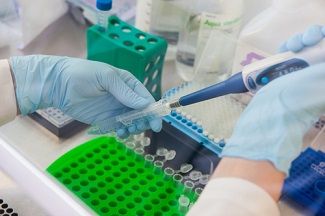Hookworm Vaccine Candidate Clears Phase I Hurdles
An estimated 450 million people suffer from hookworm infection each year, but a new study suggests it may soon be possible to vaccinate against the infection.

A new hookworm vaccine candidate appears to show promise at preventing an affliction affecting nearly half a billion people around the world.
Hookworms can penetrate the skin through soil contaminated by human feces. The larvae then travel to the small intestine, where they feed on blood, resulting in losses of blood and iron. The infection is primarily a problem in low- and middle-income countries, though it is not exclusive to those countries. At present, the primary method of counteracting the problem is through mass administration of benzimidazole anthelmintics. That strategy has significant limitations; it does not cure everyone with the infection, and those who are cured can rapidly be re-infected.
In an effort to bring about a better option for fighting the problem, an international team of investigators, including corresponding author David J. Diemert, MD, of the George Washington University School of Medicine and Health Sciences, tested a new vaccine candidate against hookworm. The results of the phase I trial were published in The Lancet Infectious Diseases.
The vaccine consists of 2 necator antigens, as preclinical studies have suggested a single antigen would not be sufficient. In the current study, the authors evaluated Necator americanus aspartic protease-1 (Na-APR-1) and Necator americanus glutathione S-transferase-1 (Na-GST-1). Their hope was that these antigens would induce neutralizing antibodies that would interfere with the functions of native proteins and lead to parasite death or an interruption of transmission.
The authors then enrolled 32 adults living in Gabon between the ages of 18 and 50. The patients were randomly assigned into one of 3 groups. Two groups were based on dosage; one group received doses of 30 μg of the experimental vaccines, and the other group received a 100 μg dose. The third group was the control group. Injections were administered intramuscularly, at days 0, 28, and 180. As this was a phase I study, the primary endpoint was safety and the secondary endpoint was immunogenicity.
The vaccine was well-tolerated, with the most common adverse events being mild-to-moderate injection-site pain, headache, myalgia, and nausea. IgG antibodies were induced for each of the vaccine antigens, and the authors reported that mean IgG levels increased with each successive dose.
The higher vaccination dose consistently induced seroconversion, and peak IgG responses were observed 2 weeks following the final vaccine administration. At follow-up 6 months after the last vaccine administration, IgG levels had steadily declined, though the authors said the 100 μg group still had IgG levels significantly higher than baseline at that point.
“Co-administration of these candidate hookworm vaccines was safe and well tolerated, and antigen-specific IgG antibodies were induced to both vaccine antigens,” the authors concluded, noting that this is believed to be the first-ever phase 1 trial of 2 novel hookworm vaccines in sub-Saharan Africa.
The authors noted one limitation: it’s possible that patients enrolled in the study had false-negatives when initially screened for intestinal helminths. If so, it could have distorted the comparison of antibody levels.
However, the authors said the results of the phase I trial are promising. They plan to continue research with a study of the vaccines in healthy children in Gabon and a phase 2 vaccine-challenge study in the United States using a human hookworm infection model.
